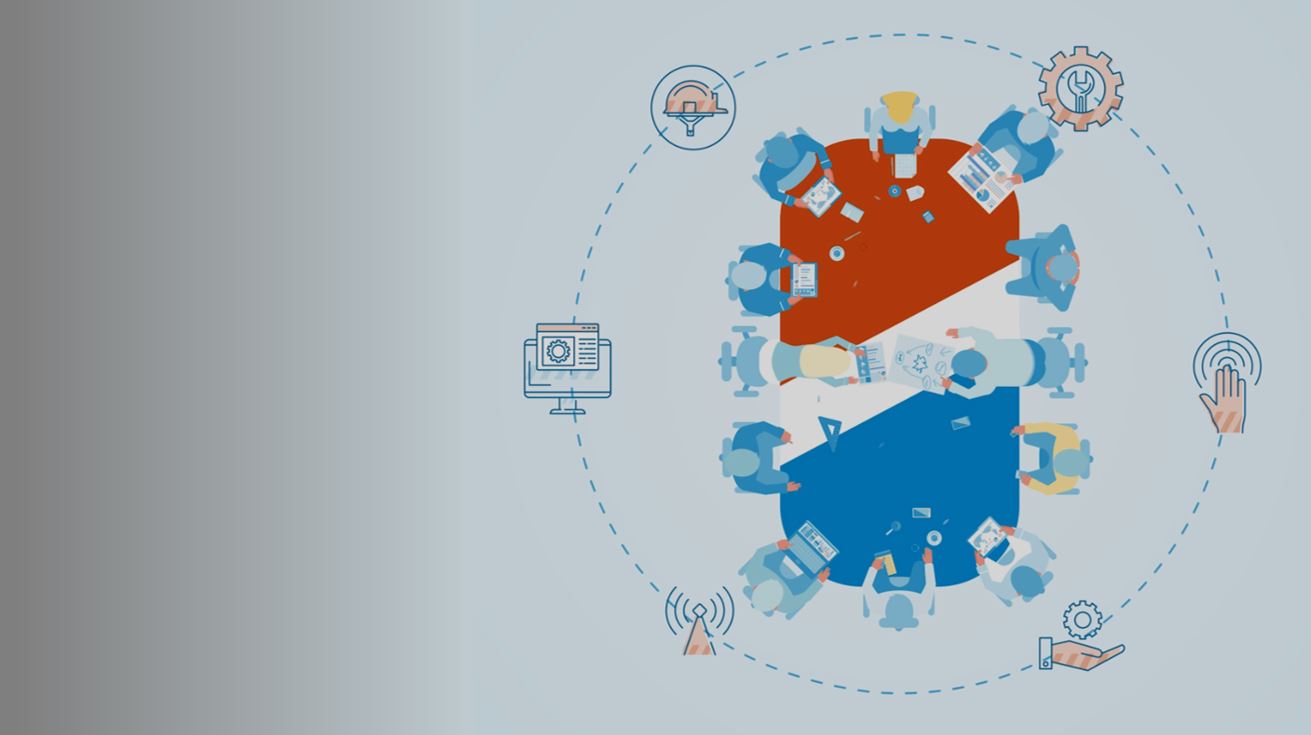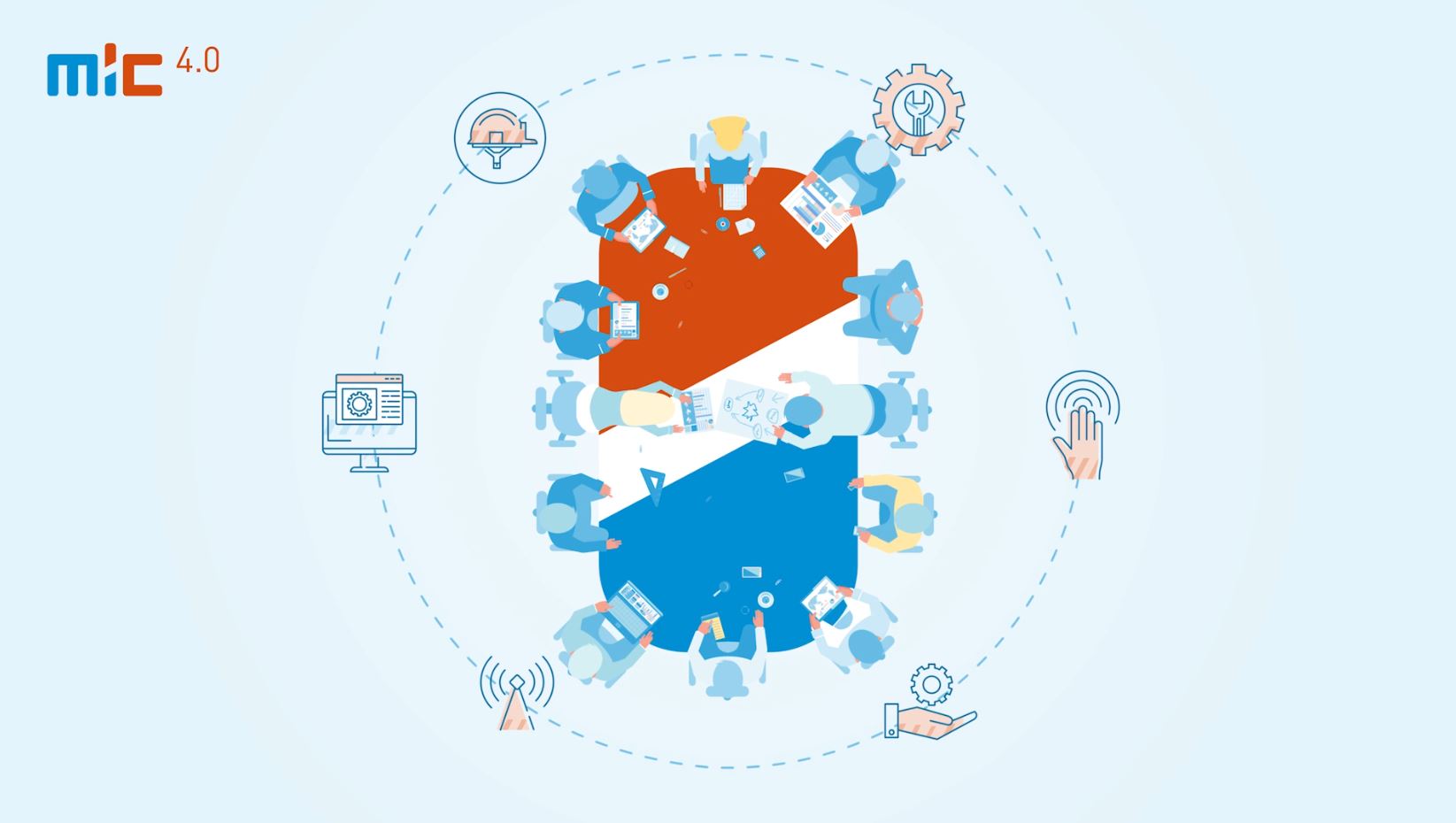
MiC 4.0 Basics and Working Groups

The frame
With currently 105 members from seven European countries, the Machines in Construction MiC 4.0 working group is the largest network organization and central body in Europe concerned with a uniform digital language and a common understanding of data content and its meaning.
The problem
- Every manufacturer of construction machinery has its own "digitization model".
- Users have to create individual solutions themselves, which is time-consuming and costly.
The goal
- A cross-manufacturer and cross-industry understanding as well as an overarching communication of digital condition, process and quality data along the entire construction process
- "MiC 4.0 compliance" of construction machinery and building materials plants in the digital environment
- A uniform data format for users and operators of machines
The solution
- Joint development of solutions regarding data, data format and data transmission
- Transmission of ISO standard-compliant data
- Manufacturer-independent and machine type-independent data format

Working group machine data
There are seven clusters in the machine data area:
- Cluster 1 - Earthmoving machinery
- Cluster 2 - Lifting solutions
- Cluster 3 - Special civil engineering machines
- Cluster 4 - Road construction machinery
- Cluster 5 - Concrete technology
- Cluster 6 - Building materials plants
(not active yet) - Cluster 7 - Attachments
- Cluster 8 - Electrically driven machines
Data Rights Working Group
Data collection, data ownership, data evaluation and the subsequent use of this data raise a multitude of questions. Data protection plays an essential role here.
The short-term goal is to create suitable tools to help the stakeholders concerned to handle this issue. Sample contracts and information brochures will present initial examples of individual contract designs for handling data.
System Architecture Working Group
The M2M communication
Machine-to-Machine Communication
Communication between machines is a crucial aspect of digitization. The vision of the future is the fully automated construction site.
The short-term goal in the field of M2M communication and in the system architecture/file formats working group responsible for it is to reach cross-vendor agreement on a machine-independent, uniform transmission of data on the same channel in each case and in the same transmission/data format.
A later and time-consuming "translation" as well as adaptation of the data can thus be omitted.
The M2B communication
Machine-to-BIM communication
An essential aspect of the services desired by users is to be able to use the data obtained in Building Information Modeling (BIM). For this purpose, they have the option of using the same data streams and data formats from the system architecture/data formats area.
The short-term goal is to simplify the use and maintenance of BIM, due to binding and manufacturer-independent data interfaces.
Cluster 1 "in" the machine
Cluster 2 "around" the machine
Cluster 3 Test specifications
Working Group Human Machine Interface (HMI)
A uniform symbolism across machines and manufacturers
The symbols and displays on machines with comparable activities are sometimes fundamentally different. However, in view of the shortage of skilled workers, few machine operators today operate several different types of machines from different manufacturers. Standardizing essential operating elements, based on ISO 7000, is beneficial for users.
The working group is developing standards for the operation of mobile machinery. To this end, it is looking at three widely used machine types (rollers, wheel loaders, road pavers) and developing a common, almost uniform display with the same structures, processes and symbols.
WG Construction Process Control
The requirements for data management in the various construction segments are increasing, including when it comes to controlling and mapping the individual processes. The new MiC 4.0 working group will identify the associated challenges and offer free, open solutions.
As a first step, the system manufacturers involved in road construction have agreed on a uniform interface description, which will be further developed, published and disseminated in the new working group. The members undertake to implement the interface in accordance with the jointly agreed MiC 4.0 specification.
The members can help shape the tasks at hand and significantly determine and influence the solutions to be developed. The results of the work are exclusively available to them.